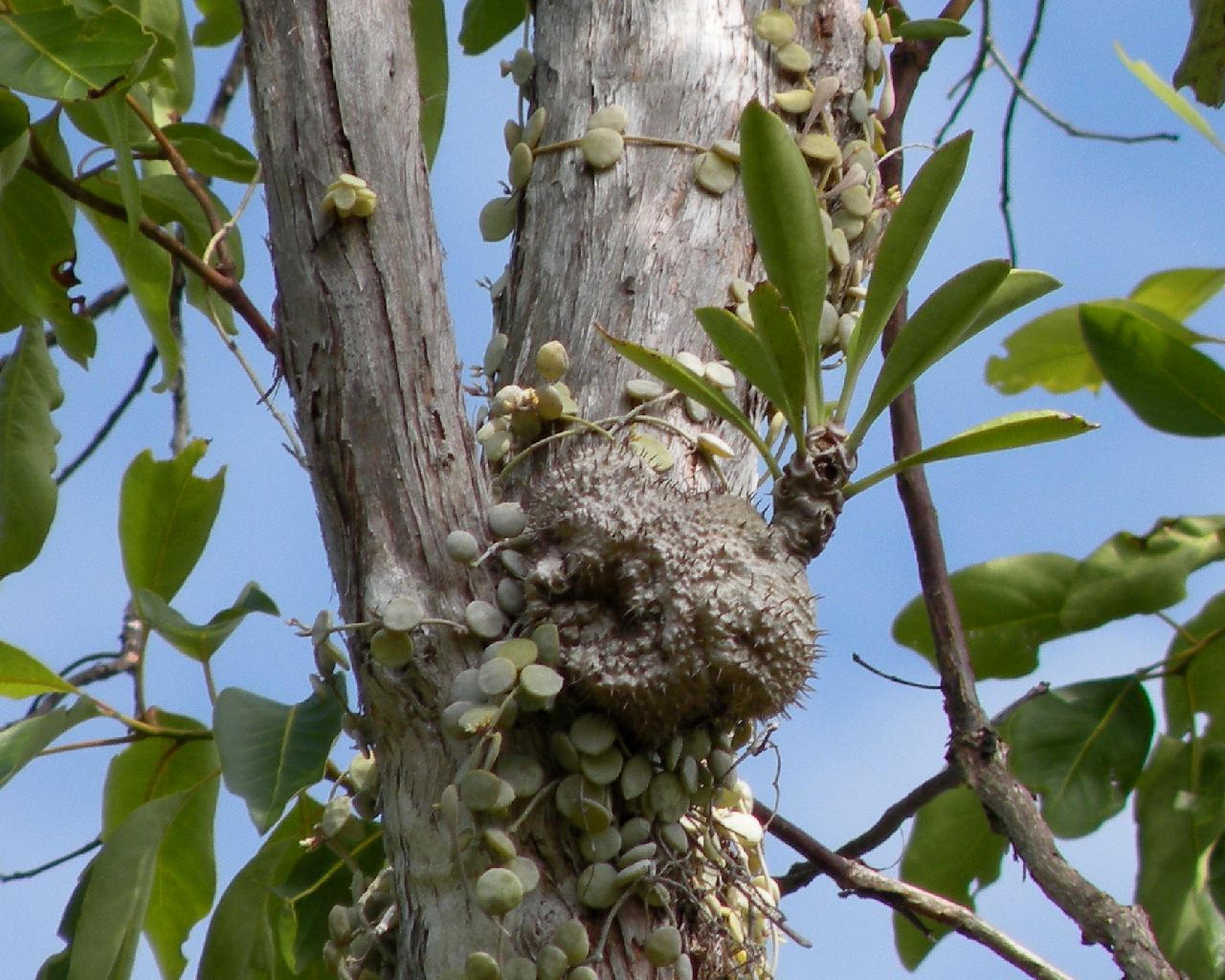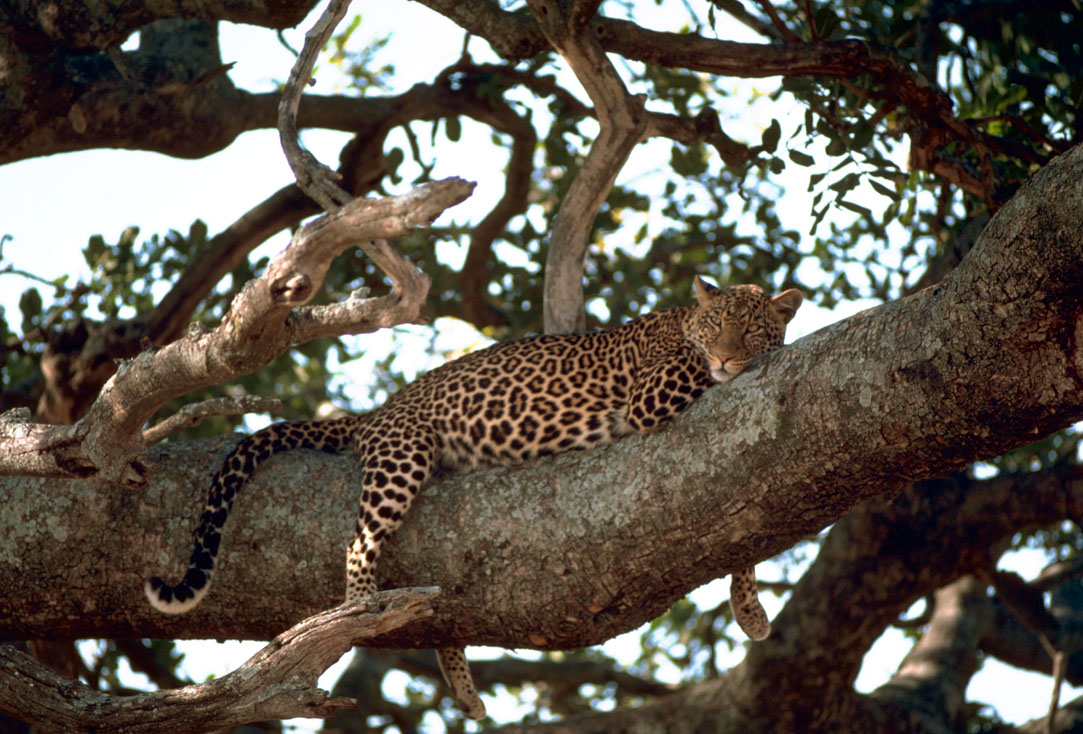|
Myrmecodia
''Myrmecodia'' is a genus of epiphytic myrmecophytes (mər′mek•ə‚fīt; literally "ant-plant"), native to Southeast Asia, but also present in Indochina, Malaysia, the Southwest Pacific, the Philippines, Fiji, and extending south to Queensland and Cape York in Australia. It is one of five ant-plant genera in the family Rubiaceae, the others being '' Anthorrhiza'', '' Hydnophytum'', '' Myrmephytum'', and '' Squamellaria''. Myrmecophytes, or ant plants, live in a mutualistic association with a colony of ants. These plants possess structural adaptations that provide ants with food and/or shelter. ''Myrmecodia'' are also classified as ephiphytes. The term ''epiphytic'' derives from the Greek ''epi-'' (meaning 'upon') and ''phyton'' (meaning 'plant'). Epiphytic plants are sometimes called "air plants" because they do not root in soil. An epiphyte is a plant that grows harmlessly upon another plant and derives its nutrition and water supply from the air and debris found in it ... [...More Info...] [...Related Items...] OR: [Wikipedia] [Google] [Baidu] |
Myrmecophyte
Myrmecophytes (; literally "ant-plant") are plants that live in a mutualistic association with a colony of ants. There are over 100 different genera of myrmecophytes. These plants possess structural adaptations that provide ants with food and/or shelter. These specialized structures include domatia, food bodies, and extrafloral nectaries. In exchange for food and shelter, ants aid the myrmecophyte in pollination, seed dispersal, gathering of essential nutrients, and/or defense. Specifically, domatia adapted to ants may be called myrmecodomatia. Mutualism Myrmecophytes share a mutualistic relationship with ants, benefiting both the plants and ants. This association may be either facultative or obligate. Obligate mutualism In obligate mutualisms, both of the organisms involved are interdependent; they cannot survive on their own. An example of this type of mutualism can be found in the plant genus '' Macaranga''. All species of this genus provide food for ants in v ... [...More Info...] [...Related Items...] OR: [Wikipedia] [Google] [Baidu] |
Hydnophytum
''Hydnophytum'' is a genus of epiphytic myrmecophytes (ant plants) native to Southeast Asia, the Pacific region and also extending into Queensland in northern Australia. The name is derived from the Ancient Greek ''hydnon'' "tuber", and ''phyton'' "plant", after their appearance with their swollen succulent stems. The species grow in tree branches and on trunks. Like the related genus ''Myrmecodia'', they are known as antplants or ant-house plants. The type species is '' Hydnophytum formicarum'' from the Philippines. The genus contains 55 species, of which 44 are found in and around the island of New Guinea. Many are poorly known, with 11 known only from the holotype. They form a symbiotic relationship with ants. Ant plants provide habitats for ant colonies high up into the forest canopy, protecting them from the elements and also predators because of the spines. Hollow, smooth-walled tunnels form within the caudex with external entrance holes, providing an above-ground home for ... [...More Info...] [...Related Items...] OR: [Wikipedia] [Google] [Baidu] |
Rubiaceae
The Rubiaceae are a family of flowering plants, commonly known as the coffee, madder, or bedstraw family. It consists of terrestrial trees, shrubs, lianas, or herbs that are recognizable by simple, opposite leaves with interpetiolar stipules and sympetalous actinomorphic flowers. The family contains about 13,500 species in about 620 genera, which makes it the fourth-largest angiosperm family. Rubiaceae has a cosmopolitan distribution; however, the largest species diversity is concentrated in the tropics and subtropics. Economically important genera include '' Coffea'', the source of coffee, '' Cinchona'', the source of the antimalarial alkaloid quinine, ornamental cultivars (''e.g.'', '' Gardenia'', '' Ixora'', '' Pentas''), and historically some dye plants (''e.g.'', '' Rubia''). Description The Rubiaceae are morphologically easily recognizable as a coherent group by a combination of characters: opposite or whorled leaves that are simple and entire, interpetiolar sti ... [...More Info...] [...Related Items...] OR: [Wikipedia] [Google] [Baidu] |
Squamellaria
''Squamellaria'' is a genus of myrmecophytic flowering plants in the family Rubiaceae. It is endemic to the islands of Fiji. It is one of five ant-plant genera in the family Rubiaceae, the others being ''Anthorrhiza'', ''Hydnophytum'', ''Myrmecodia'', and ''Myrmephytum''. Species The following list of 4 species is sourced from The Plant List.''Squamellaria'' . *'''' () |
Myrmephytum
''Myrmephytum'' is a genus of myrmecophytic flowering plants in the family Rubiaceae. It is distributed from central Malesia to New Guinea. It is one of five ant-plant genera in the family Rubiaceae, the others being ''Anthorrhiza'', '' Hydnophytum'', ''Myrmecodia'', and ''Squamellaria''. Species The following list of 5 species is sourced from The Plant List.''Myrmephytum'' The Plant List
The Plant List was a list of botanical names of species of plants created by the Royal Botanic Gardens, Kew and the Missouri Botanical Garden and launched in 2010. It was intended to be a comprehensive record of all known names of plant species ... .
*'' [...More Info...] [...Related Items...] OR: [Wikipedia] [Google] [Baidu] |
Anthorrhiza
''Anthorrhiza'' is a genus of myrmecophytic flowering plants in the family Rubiaceae. It is endemic to Papua New Guinea, including the Louisiade Archipelago. It is one of five ant-plant genera in the family Rubiaceae, the others being '' Hydnophytum'', ''Myrmecodia ''Myrmecodia'' is a genus of epiphytic myrmecophytes (mər′mek•ə‚fīt; literally "ant-plant"), native to Southeast Asia, but also present in Indochina, Malaysia, the Southwest Pacific, the Philippines, Fiji, and extending south to Queens ...'', '' Myrmephytum'', and '' Squamellaria''. Species * '' Anthorrhiza areolata'' C.R.Huxley & Jebb * '' Anthorrhiza bracteosa'' C.R.Huxley & Jebb * '' Anthorrhiza caerulea'' C.R.Huxley & Jebb * '' Anthorrhiza camilla'' Jebb * '' Anthorrhiza chrysacantha'' C.R.Huxley & Jebb * '' Anthorrhiza echinella'' C.R.Huxley & Jebb * '' Anthorrhiza mitis'' C.R.Huxley & Jebb * '' Anthorrhiza recurvispina'' C.R.Huxley & Jebb * '' Anthorrhiza stevensii'' C.R.Huxley & Jebb R ... [...More Info...] [...Related Items...] OR: [Wikipedia] [Google] [Baidu] |
Australia
Australia, officially the Commonwealth of Australia, is a sovereign ''Sovereign'' is a title which can be applied to the highest leader in various categories. The word is borrowed from Old French , which is ultimately derived from the Latin , meaning 'above'. The roles of a sovereign vary from monarch, ruler or ... country comprising the mainland of the Australian continent, the island of Tasmania, and numerous smaller islands. With an area of , Australia is the largest country by area in Oceania and the world's sixth-largest country. Australia is the oldest, flattest, and driest inhabited continent, with the least fertile soils. It is a megadiverse country, and its size gives it a wide variety of landscapes and climates, with deserts in the centre, tropical Forests of Australia, rainforests in the north-east, and List of mountains in Australia, mountain ranges in the south-east. The ancestors of Aboriginal Australians began arriving from south east Asia approx ... [...More Info...] [...Related Items...] OR: [Wikipedia] [Google] [Baidu] |
Hypocotyl
The hypocotyl (short for "hypocotyledonous stem", meaning "below seed leaf") is the stem of a germinating seedling, found below the cotyledons (seed leaves) and above the radicle (root). Eudicots As the plant embryo grows at germination, it sends out a shoot called a radicle that becomes the primary root, and then penetrates down into the soil. After emergence of the radicle, the hypocotyl emerges and lifts the growing tip (usually including the seed coat) above the ground, bearing the embryonic leaves (called cotyledons), and the plumule that gives rise to the first true leaves. The hypocotyl is the primary organ of extension of the young plant and develops into the stem. Monocots The early development of a monocot seedling like cereals and other grasses is somewhat different. A structure called the coleoptile, essentially a part of the ''cotyledon'', protects the young stem and plumule as growth pushes them up through the soil. A mesocotyl—that part of the young plant that ... [...More Info...] [...Related Items...] OR: [Wikipedia] [Google] [Baidu] |
Arboreal Locomotion
Arboreal locomotion is the locomotion of animals in trees. In habitats in which trees are present, animals have evolved to move in them. Some animals may scale trees only occasionally, but others are exclusively arboreal. The habitats pose numerous mechanical challenges to animals moving through them and lead to a variety of anatomical, behavioral and ecological consequences as well as variations throughout different species.Cartmill, M. (1985). Climbing. In ''Functional Vertebrate Morphology'', eds. M. Hildebrand D. M. Bramble K. F. Liem and D. B. Wake, pp. 73–88. Cambridge: Belknap Press. Furthermore, many of these same principles may be applied to climbing without trees, such as on rock piles or mountains. Some animals are exclusively arboreal in habitat, such as the tree snail. Biomechanics Arboreal habitats pose numerous mechanical challenges to animals moving in them, which have been solved in diverse ways. These challenges include moving on narrow branches, m ... [...More Info...] [...Related Items...] OR: [Wikipedia] [Google] [Baidu] |
Aerial Stem Modification
Aerial stem modifications are modifications to the aerial stems, vegetative buds and floral buds of plants growing in different conditions and which perform functions such as climbing, protection, support, synthesis of food, or vegetative propagation. Aerial stem structures that undergo modifications to perform these special functions include tendrils, thorns, hooks, phylloclade, tuberous stems and bulbils. The auxiliary or the terminal part of the modified structures show their stem nature. Tendrils Some weak stemmed plants produce wiry, coiled, sensitive and delicate organs for climbing. They are called tendrils. These may develop from either the axillary bud or the terminal bud of the stem. In '' Passiflora'', the tendrils develop from the axillary bud. In '' Cissus quadrangularis'' and in ''Vitis vinifera'' the terminal bud develops into tendrils. Thorns These are hard, woody, pointed structures meant for protection. They are provided with vascular tissue, which ... [...More Info...] [...Related Items...] OR: [Wikipedia] [Google] [Baidu] |
Tuber
Tubers are a type of enlarged structure used as storage organs for nutrients in some plants. They are used for the plant's perennation (survival of the winter or dry months), to provide energy and nutrients for regrowth during the next growing season, and as a means of asexual reproduction. ''Stem tubers'' form thickened rhizomes (underground stems) or stolons (horizontal connections between organisms); well known species with stem tubers include the potato and yam. Some writers also treat modified lateral roots (''root tubers'') under the definition; these are found in sweet potatoes, cassava, and dahlias. Terminology The term originates from the Latin , meaning "lump, bump, swelling". Some writers define the term "tuber" to mean only structures derived from stems; others use the term for structures derived from stems or roots., p. 124 Stem tubers A stem tuber forms from thickened rhizomes or stolons. The top sides of the tuber produce shoots that grow into typi ... [...More Info...] [...Related Items...] OR: [Wikipedia] [Google] [Baidu] |




.jpg)